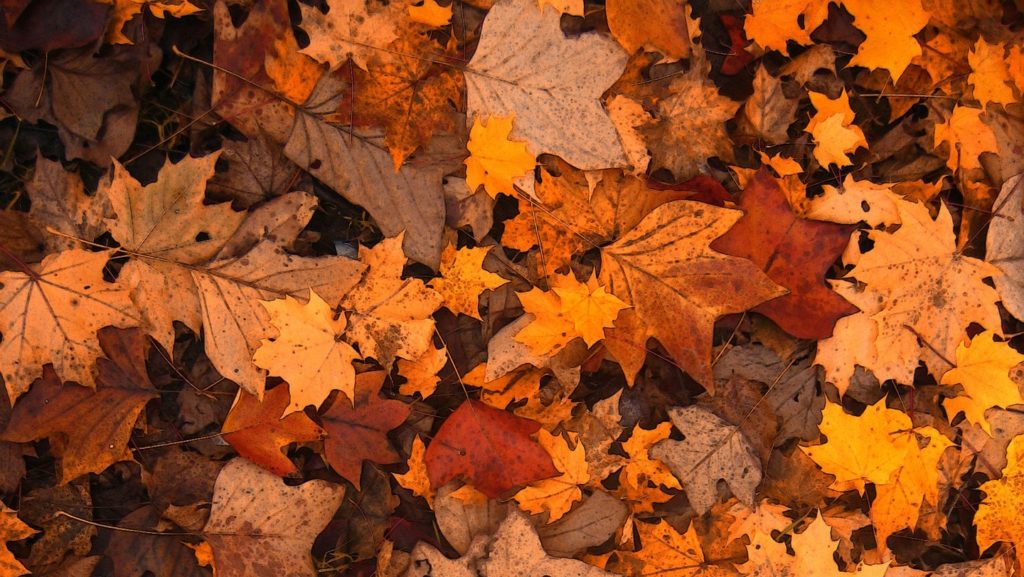 As the light diminishes and the soil temperatures cool, these changes trigger a hormone in deciduous trees that sends a chemical message to every leaf telling them it’s time to drop. Once the message is received, cells appear where the leaf stem meets the branch. They are called “abscission” cells, which have the same suffix as the word scissors, meaning they are designed, like scissors, to make a cut. And within a few weeks, every leaf on these trees develop a thin bumpy line of cells that push the leaf, away from the stem.
As the light diminishes and the soil temperatures cool, these changes trigger a hormone in deciduous trees that sends a chemical message to every leaf telling them it’s time to drop. Once the message is received, cells appear where the leaf stem meets the branch. They are called “abscission” cells, which have the same suffix as the word scissors, meaning they are designed, like scissors, to make a cut. And within a few weeks, every leaf on these trees develop a thin bumpy line of cells that push the leaf, away from the stem.
Leaves drop in autumn because their purpose of photosynthesis requires more energy than the energy they create. During the spring, summer and early autumn they produce the carbohydrates that helps the tree grow, thrive and reproduce. As the days get shorter and colder, photosynthesis slows down, giving the deciduous tree the signal – let go.
Now’s the time to utilise leaves. Your leaves are an invaluable resource for your garden. Leaves are responsible for the creation of nutrient rich topsoil and contain many other benefits such as free mulch to suppress weeds in your garden, give beneficial fungi and insects a good home as well as help insulate soil and protect your tree during the hotter months.
Get in touch if you’d like to purchase mulch for your property.
Top 3 ways to use your leaves
- You can spread leaves on your garden bed to suppress weeds and retain moisture
- You can compost your leaves these are a great source of carbon to balance your compost chemistry.
- Spread leaves around the drip line of the tree to protect and insulate roots
Other things to consider:
Planting
Autumn is a great time to plant and get things established so they can really thrive. When you’re on a walk, keep an eye out for native seeds to collect and plant at home. It is important to use eco-sourced endemic seeds when planting as the plants will be suited to local conditions and more likely to survive. Eco-sourcing is propagating native plants from local areas and planting them back in the same geographic area, according to the New Zealand Plant Conservation Network. In the case of Canterbury, these are native plants that are well adapted to local conditions including frost, snow, drought, nor’westers, and southerlies. Plants grown in Waikato or Northland won’t necessarily be well adapted to Canterbury conditions and may not survive or grow as well.
Pruning
Autumn is a good time to prune most trees.
Trees are pruned or trimmed for several tree care reasons. Professional, experienced Arborists can improve tree health, tree structure, and also add light, space, and beauty to your beloved trees. Little and often is the way to gently guide your tree to a happy prosperous life.
Tree Lifting:
Lifting involves the removal of lower canopy branches to provide clearance for buildings, vehicles, pedestrians, to enhance views and increase light.
Tree Thinning:
Thinning increases light penetration and air movement through the crown. It also opens the foliage of a tree, reduces weight on heavy limbs, and helps retain the tree’s natural shape.
Hedge Trimming:
New hedges should be trimmed from an early stage to establish a shape and prevent leggy, unhealthy growth. The amount you prune back will depend on the type of hedge. Once the hedge is established, regular maintenance will ensure it remains healthy and has a great appearance.
Tree inspections and health
We offer a consultation service to inspect your trees and give advice and make a plan for how to best care for your asset.
